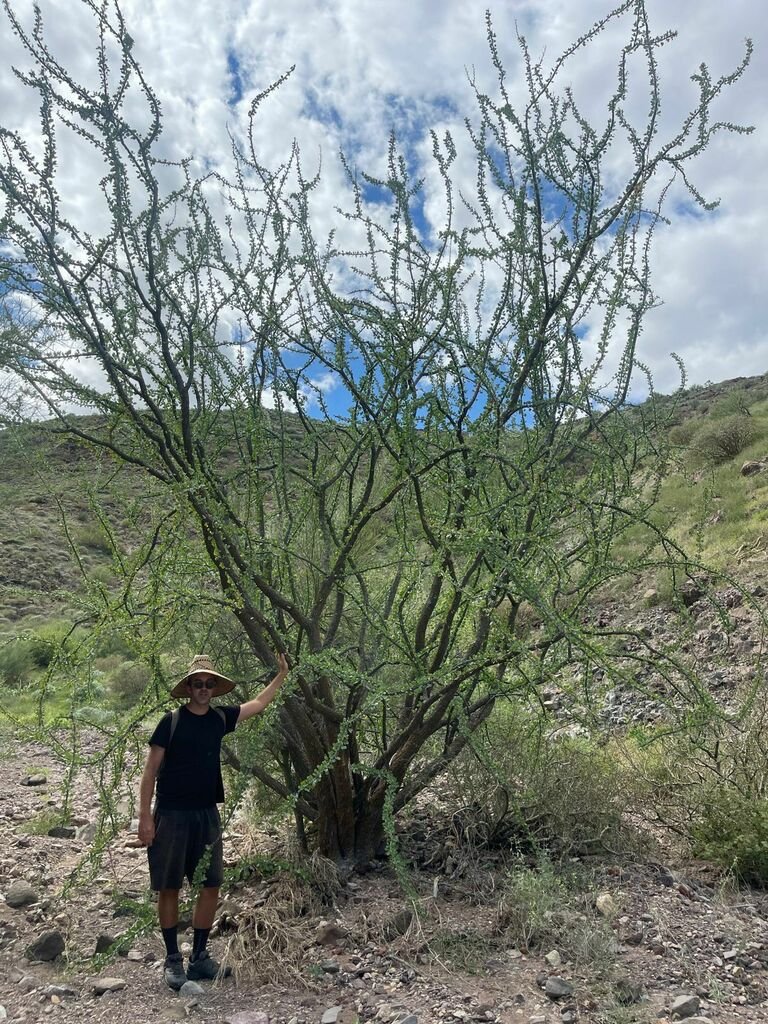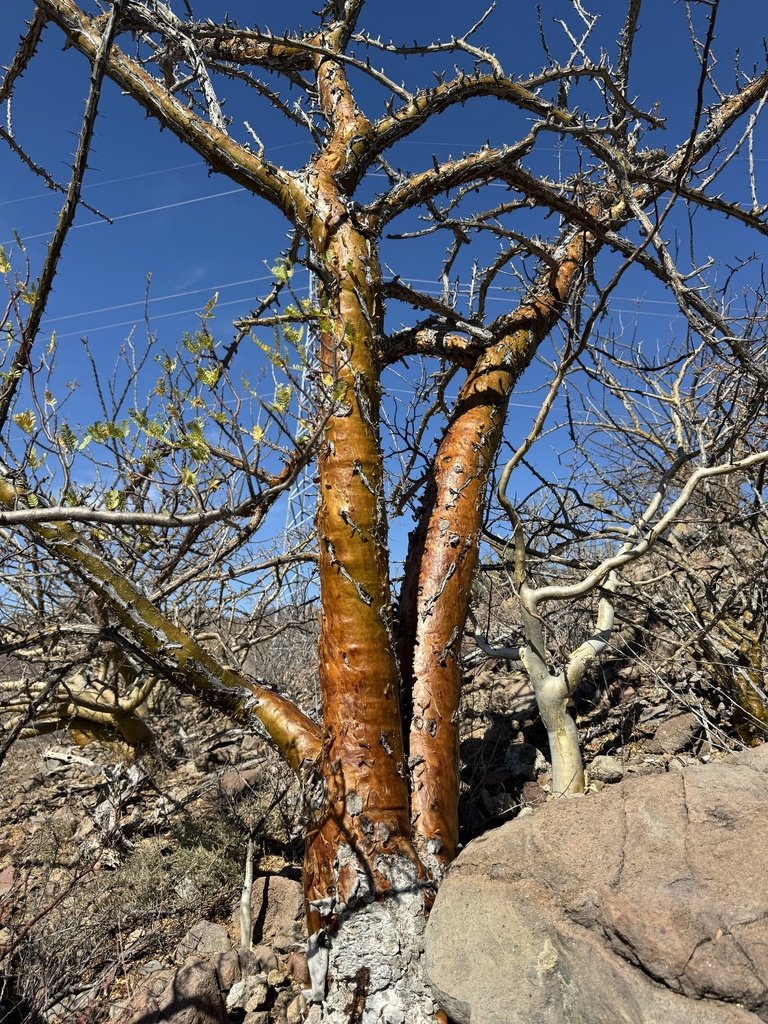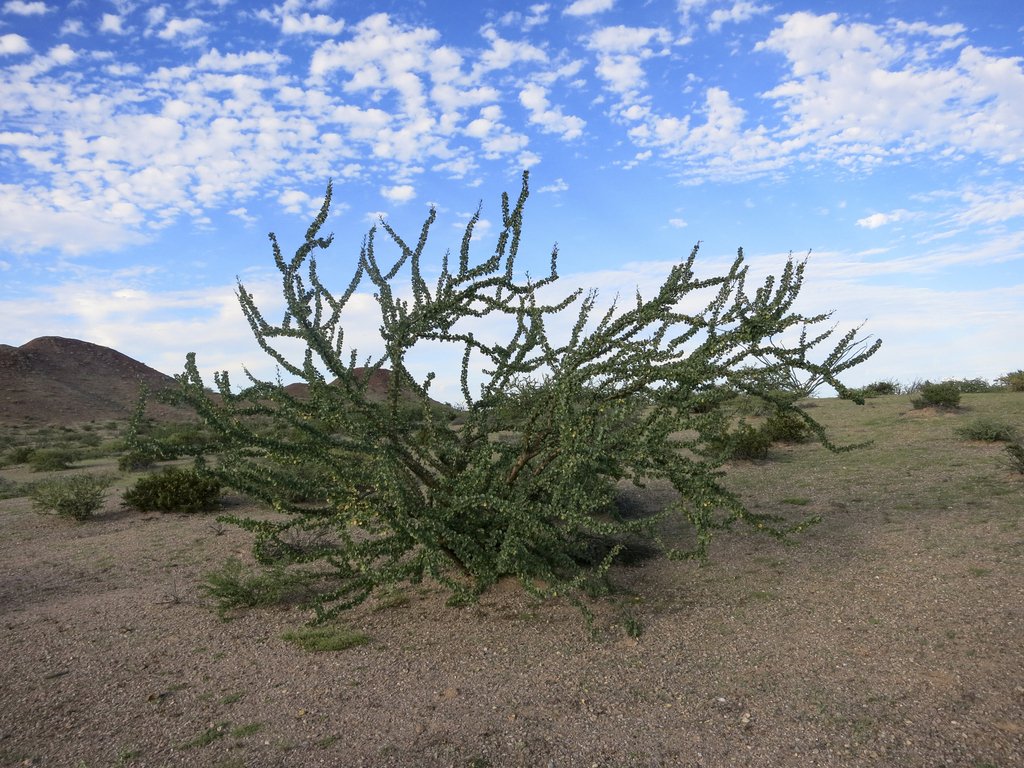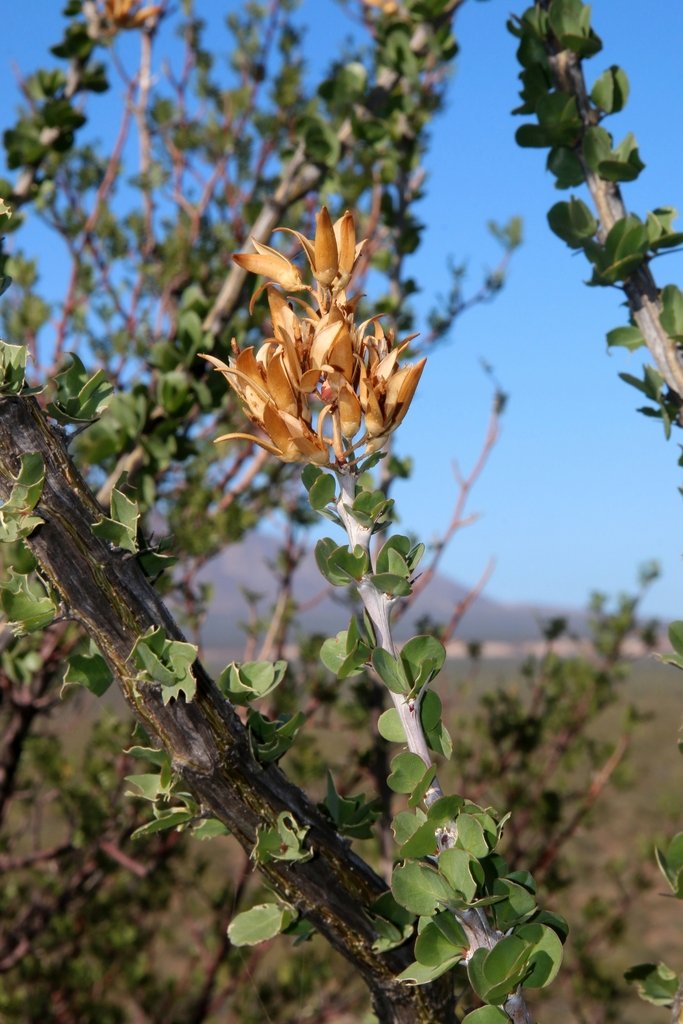Palo Adán
Fouquieria diguetii
This plant is a deciduous shrub arising from a short, thick trunk with branches covered in spines. It grows up to about 20 or more feet tall where moisture is more prevalent, between 8-12’ in drier areas. They grow almost as wide as they grow tall. The leaves are dark green and elliptic. The flowers are bright red in color. When a mature plant is encountered in landscapes in our region, people will at first think its just an ocotillo, until they see how much wider, and more branched at the base plants are. The flowers are a brighter reddish orange than ocotillo as well.
There is a considerable amount of variation in the growth habit and inflorescence length over the distribution of this species. Plants in the Sonoran Desert typically only reach 3-10’ in height at maturity, while mature plants in the southern tropical region may commonly exceed 15’ in height. The length of the inflorescence is dependent on the moisture available at the time of development, meaning plants in the arid part of the range have inflorescences that are much shorter in length (a few inches), while in the tropical parts of the range the inflorescence may average 4-5 inches in length. Inflorescences produced in the dry season tend to be much shorter than those produced in the wet seasons.
Grow in full sun. This plant is very drought tolerant, but watering plants (in the ground) 2-3 times a month in summer will keep them looking very healthy and happy. Water 2-3 times a week in containers (in summer). Plants in winter may not need water, but if it doesn’t rain, water once a month (in the ground). Container plants can be watered once a week or so in winter. Plants are hardy to about 25°F.
This plant is pollinated by hummingbirds.
Reportedly the bark is stripped and cooked and used to wash cuts. Ethnobotanical uses are not well-documented but plants in this genus have been used as medicine almost wherever they occur. Flowers are edible.
This species is named for Leon Diguet, a French naturalist who traveled throughout Baja California.
This plant may be found from the vicinity of El Crucero in southern Baja California into the cape of the Baja California Sur, and on the surrounding islands in the gulf, and the Santa Margarita and Magdalena Islands on the Pacific coast. It is also found on some parts of the coast of Sonora and Sinaloa, facing the Gulf of California.

A typical plant in the wild. This species is way less V-shaped than our local ocotillo. Photo by Glenn Ehrenberg, iNaturalist

When the trunk is more exposed (lack of branches) it will develop a coppery tone. Photo by carlfrederick, iNaturalist

Younger plants can especially grow wider than expected. Photo by Jeanne Benioff, iNaturalist

The flowers, photo by jrebman, iNaturalist

The flowers are followed by capsules which contain papery seeds. Photo by Joachim Keller, iNaturalist

